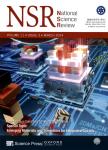A single-cell transcriptome atlas of the aging human and macaque retina
A single-cell transcriptome atlas of the aging human and macaque retina作者机构:Institute for Stem Cell and Regeneration Chinese Academy of Sciences Advanced Innovation Center for Human Brain ProtectionBeijing Institute for Brain DisordersCapital Medical University Center for Excellence in Brain Science and Intelligence Technology Chinese Academy of Sciences National Resource Center for Non-Human Primates(Kunming) Primate Research Center at IBP(Beijing) Chinese Academy of Sciences Eye Center at The First Affiliated Hospital of USTC Hefei National Laboratory for Physical Sciences at the MicroscaleSchool of Life Sciences Division of Life Sciences and Medicine University of Science and Technology of China State Key Laboratory of Brain and Cognitive Science Institute of Brain-Intelligence TechnologyBioland Laboratory Institute of Biophysics Chinese Academy of Sciences University of Chinese Academy of Sciences State Key Laboratory of Cognitive Neuroscience and Learning Beijing Normal University IDG/McGovern Institute for Brain Research Beijing Normal University Neurodegenerative Disorder Research Center CAS Key Laboratory of Brain Function and DiseaseUniversity of Science and Technology of China Department of Ophthalmology Beijing Key Laboratory of Restoration of Damaged Ocular Nerve Peking University Third Hospital Chinese Academy of Medical Sciences & Peking Union Medical College State Key Laboratory of Brain and Cognitive Science Institute of Brain-Intelligence Technology (Shanghai)Bioland Laboratory (Guangzhou) Institute of Biophysics Chinese Academy of Sciences
出 版 物:《National Science Review》 (国家科学评论(英文版))
年 卷 期:2021年第8卷第4期
页 面:48-65页
核心收录:
学科分类:0710[理学-生物学] 07[理学] 071007[理学-遗传学]
基 金:supported by the National Key Research and Development Program of China (2020YFA0112200) the Strategic Priority Research Program of the Chinese Academy of Sciences(XDA16020601/03 and XDB39000000) the National Key Research and Development Program of China (2019YFA0110100,2017YFA0103303 and 2017YFA0102601) the National Natural Science Foundation of China (81925009, 81790644, 31671072,81891001, 81900855, 31771140 and 31900712) the Fundamental Research Funds for the Central Universities (WK2070000174and WK2090050048) the National Resource Center for NonHuman Primates and Beijing Brain Initiative of Beijing Municipal Science&Technology Commission (Z181100001518004)
主 题:single-cell RNA sequencing primate retina aging cell heterogeneity age-related disease cell-cell communication
摘 要:The human retina is a complex neural tissue that detects light and sends visual information to the brain.However, the molecular and cellular processes that underlie aging primate retina remain unclear. Here, we provide a comprehensive transcriptomic atlas based on 119 520 single cells of the foveal and peripheral retina of humans and macaques covering different ages. The molecular features of retinal cells differed between the two species, suggesting distinct regional and species specializations of the human and macaque retinae. In addition, human retinal aging occurred in a region-and cell-type-specific manner. Aging of human retina exhibited a foveal to peripheral gradient. MYO9A~-rods and a horizontal cell subtype were greatly reduced in aging retina, indicating their vulnerability to aging. Moreover, we generated a dataset showing the cell-type-and region-specific gene expression associated with 55 types of human retinal disease, which provides a foundation to understanding of the molecular and cellular mechanisms underlying human retinal diseases. Such datasets are valuable to understanding of the molecular characteristics of primate retina, as well as molecular regulation of aging progression and related diseases.



